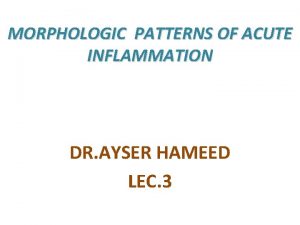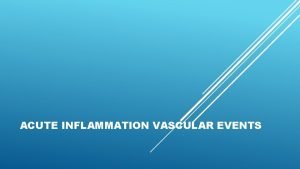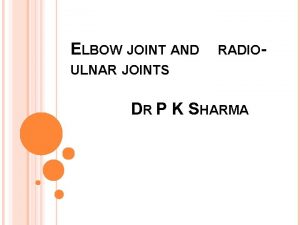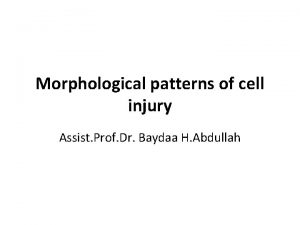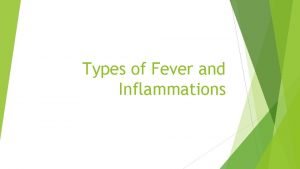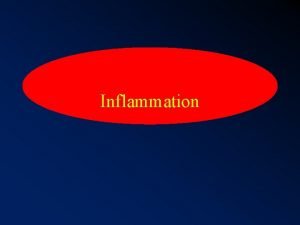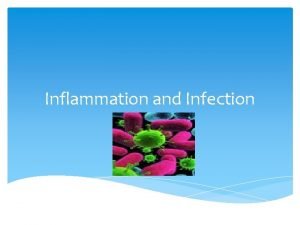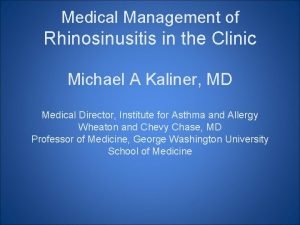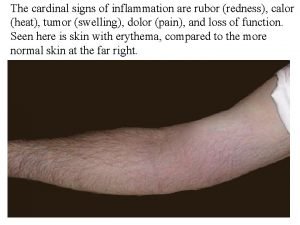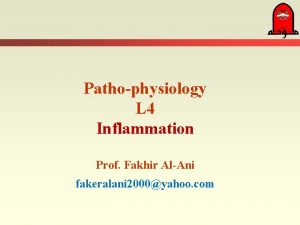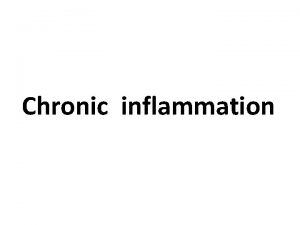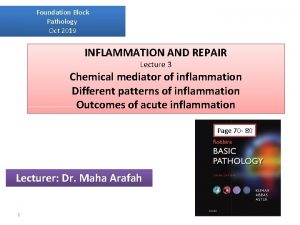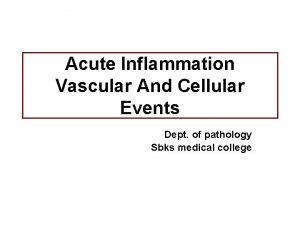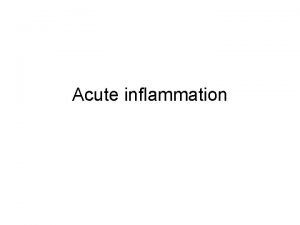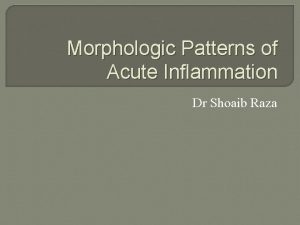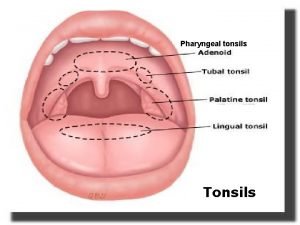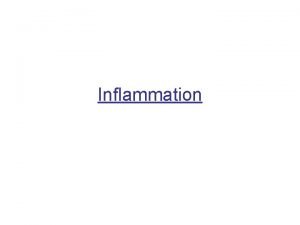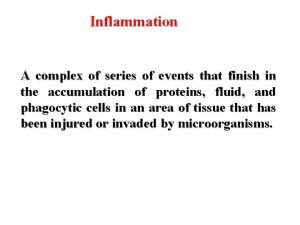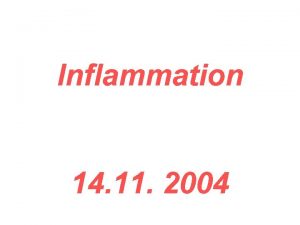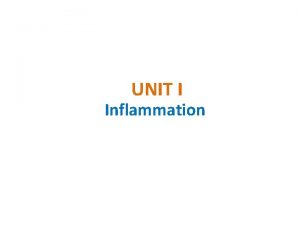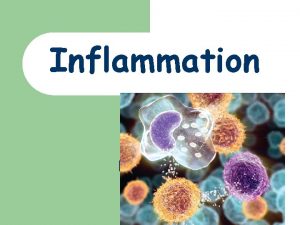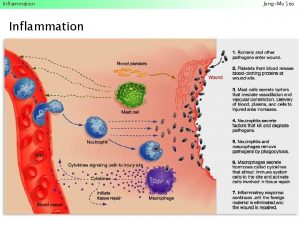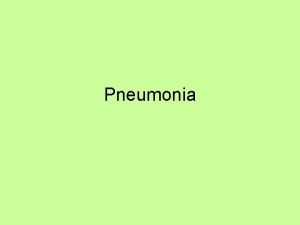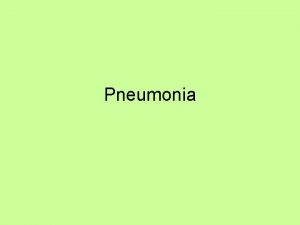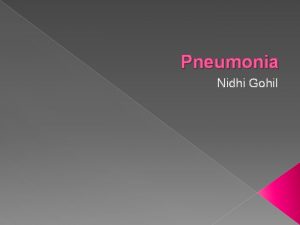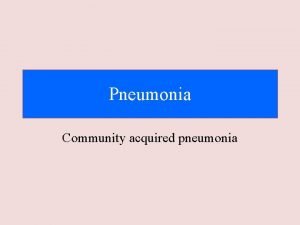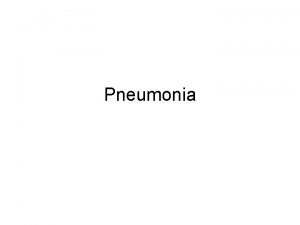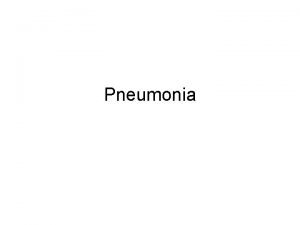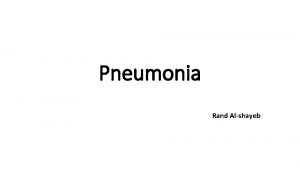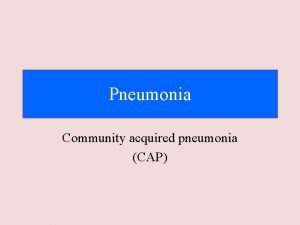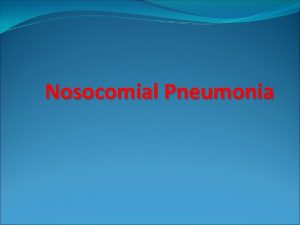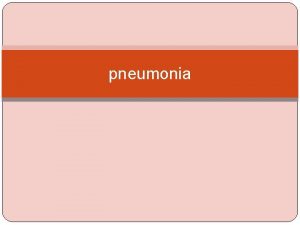Pneumonia Aming ChorMing Lin Pneumonia Inflammation or infection

























- Slides: 25

Pneumonia Aming Chor-Ming Lin

Pneumonia ► Inflammation or infection of the lungs. ► The lungs' air sacs fill with pus, mucus, and other liquid and can not function properly. ► Oxygen can’t reach the blood--insufficient oxygen in the blood--body cells can not function properly --die.

Classification of Pneumonia ► Typical vs. Atypical ► Practical classification § Community Acquired Pneumonia (CAP) § Hospital Acquired Pneumonia (HAP) ► Ventilator Associated Pneumonia (VAP) ► Health Care Associate Pneumonia (HCAP) § Aspiration Pneumonia § Pneumonia in the Immunocompromised Patients


發生CAP的危險因子 ► 年長者 ► 同時存在的疾病 § COPD § DM § Renal insufficiency § CHF § CAD § Malignancy § Chronic neurological disease § Chronic liver disease

Pneumonia ► Clinical Presentation § Fever § Increased WBC § Productive cough § Increased respiratory rate § Breath sound: rales/ronchi § Chest X-ray: infiltrate / consolidation

判讀的步驟 ► A: Airway ► B: Bone ► C: Cardiac, mediastinum and hilar ► D: Diaphragm ► E: Else (soft tissue, pleura, breast…) ► F: Lung Field





► 32 Y/O male ► Cough for 1 wk ► Fever for 2 days ► Rales over LLL

Pneumonia Pathogens ► Microorganisms § Viruses § Bact Pneumonia § Mycoplasma, Chlamydia, Legionella § M. tuberculosis § Fungi § Protozans and parasites Age <6 months-5 Yr Adol/Adult >65 Yr Etiologic agents C. trachomatis, RSV, H. influenza Mycoplasma, Chlamydia H. influenzae, L. pneumoniae v except Streptococcus pneumoniae

Pneumonia: Community Acquired ► Common pathogens § Viruses ( most common type) § Bacteria: ►S. pneumoniae, H. influenzae § M. pneumoniae § C. pneumoniae § Legionella pneumophila § Mycobacterium

Aspiration Pneumonia ► Common pathogens § Mixed flora § Mouth anaerobes ►Peptostreptococcus spp, Actinomyces spp. § Stomach contents ►Chemical pneumonitis ►Enterobacterium

Typical pneumonia: Clinical presentation ► Usual § § § § bacteria Sudden onset Fever with chills, rigors Productive cough, Mucopurulent sputum Tachypnea and tachycardia Pleuritic chest pain Breath sound: crackles and rales CXR: air-bronchogram, consolidation

Atypical pneumonia: Clinical presentation Atypical § § § § Gradual onset Afebrile Dry cough Breath sound: Rales Uni/bilateral patchy, infiltrates WBC: usual normal or slight high Sore throat, myalgia, fatigue, diarrhea Common etiology ► Mycoplasma pneumoniae ► Chlamydia pneumoniae ► Legionella pneumophilla ► Mycobactria ► Virus ► Others

Pneumonia ► Diagnosis § Sputum gram stain and culture § Good specimen ► PMN’s>25/LPF ► Few epithelial cells<10/LPF ► Single predominant organism

Pneumonia ► Gram stain § Organisms not visible on gram stain ► M. pneumonia, Chlamydia ► Legionella pneumophila ► Viruses ► Mycobacterium § Common organisms ► Gram positive: diplococci (pairs and chains) ► Gram positive: clusters, ie staphylococcal pneumonia ► Gram negative: coccobacillary, ie K. P. ► Gram negative: rods

Pneumonia 的 治療 ► Keep vital signs: Airway, Breathing, Circulation ► Symptom treatment ► Antibiotics: § Bacteria § Atypical pathogens

須住院治療的條件 ► 原則上,病人有多項危險因子,病情複雜者,都要 住院治療。 ► The Pneumonia Patient Outcomes Research Team (PORT) risk factors (Wishwa N Kapoor : Agency for Health Care Policy and Research, 1997): § 65 歲以上 § 其他並存的疾病如COPD、Bronchiectasis 、Malignancy 、 DM 、CRF 、CHF 、 Chronic liver disease 、 Chronic alcohol abuse 、Malnutrition 、CVA 、 Postsplenectomy.




 Chorming
Chorming Negosyo na nag aalok ng gupit sa buhok
Negosyo na nag aalok ng gupit sa buhok Layunin sa pangungusap
Layunin sa pangungusap Morphologic patterns of acute inflammation
Morphologic patterns of acute inflammation Vascular response in acute inflammation
Vascular response in acute inflammation Radio ulnar joint
Radio ulnar joint Morphological patterns of acute inflammation
Morphological patterns of acute inflammation Otitis media with effusion otoscopy
Otitis media with effusion otoscopy Cell injury and inflammation
Cell injury and inflammation Cell injury and inflammation
Cell injury and inflammation Subfebr
Subfebr Cellular events of acute inflammation
Cellular events of acute inflammation 5 cardinal signs of inflammation
5 cardinal signs of inflammation Nasal mucosa inflammation
Nasal mucosa inflammation Cardinal signs of inflammation
Cardinal signs of inflammation Diabedesis
Diabedesis Chronic inflammation
Chronic inflammation Catarrhal inflammation
Catarrhal inflammation Vascular and cellular events of acute inflammation
Vascular and cellular events of acute inflammation Inflammation of maxillofacial area
Inflammation of maxillofacial area Inflammation
Inflammation Morphologic pattern of acute inflammation
Morphologic pattern of acute inflammation Tonsils
Tonsils Granulomatois
Granulomatois Cellular events of acute inflammation
Cellular events of acute inflammation Types of inflammation
Types of inflammation



